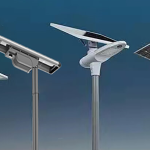Reel Irrigation Machines: A Comprehensive Guide
Introduction
Reel irrigation machines are one of the most essential tools in modern agriculture. The use of mechanized irrigation systems has significantly improved efficiency in farming, and among these, **Reel Irrigation Machines** stand out as one of the most popular and effective systems. Due to their flexibility, ease of mobility, and ability to cover large areas, they have become particularly favored for large-scale farms. In this article, we will provide a detailed overview of reel irrigation machines, their operation, benefits, drawbacks, and applications in agriculture.
—
**What are Reel Irrigation Machines?**
Reel irrigation machines consist of a long hose wound onto a large reel or drum. At the end of the hose, there is a sprinkler or boom system responsible for dispersing water over the cultivated area. When the system is activated, the hose is gradually wound back onto the reel, while the sprinkler or boom irrigates the field evenly and efficiently.
—
**Structure and Main Components**
Reel irrigation machines are composed of several key components, each playing a crucial role in the system’s operation:
1. **Reel or Drum**: The long hose is wound around this reel. Depending on the model, the hose is retracted either by water pressure or by motorized mechanisms.
2. **Irrigation Hose**: Made of durable materials, the hose carries water to the sprinkler.
3. **Sprinkler or Boom**: At the end of the hose, a sprinkler or boom is positioned to distribute water. Sprinklers typically rotate, dispersing water in a circular pattern, while booms spread water evenly along a straight line.
4. **Pump**: Some models feature pumps to provide the necessary water pressure for irrigation.
5. **Brakes and Speed Control System**: These systems regulate the speed of the hose retraction to ensure precise and consistent irrigation.
—
**How It Works**
The operation of a reel irrigation machine is both simple and effective. First, the hose is fully unwound from the reel, and the sprinkler or boom is placed at the far end of the field. Once the system is activated, water is pumped through the hose to the sprinkler, which begins watering the field. Simultaneously, the reel retracts the hose, moving the sprinkler slowly across the field, ensuring even water distribution.
Due to its automated movement, this machine can irrigate large areas without constant supervision. Depending on the hose length and speed settings, a reel irrigation machine can cover significant ground within hours or a single day.
—
**Advantages of Reel Irrigation Machines**
1. **High Flexibility**: These machines perform well on sloped or uneven terrain, making them suitable for various land types.
2. **Ease of Use**: Reel irrigation systems are easy to set up and operate, requiring no special technical expertise.
3. **Large Coverage Area**: These machines can irrigate vast areas evenly, making them ideal for large farms.
4. **Labor Efficiency**: Reel irrigation machines require minimal supervision, reducing the need for manual labor on farms.
5. **Portability**: These systems are easily moved from one part of the farm to another, allowing multiple zones to be irrigated efficiently.
—
**Disadvantages of Reel Irrigation Machines**
1. **High Initial Cost**: Purchasing and maintaining reel irrigation machines can be expensive for farmers.
2. **Water Pressure Requirements**: Some models require high water pressure to function optimally, which can be challenging in areas with limited water resources.
3. **Energy Consumption**: Models that use motors for hose retraction consume more energy.
4. **Limited Control in Smaller Areas**: On smaller fields or areas requiring more precise irrigation, reel systems may not provide the fine-tuned control that localized systems offer.
—
**Applications of Reel Irrigation Machines**
Reel irrigation machines are primarily used on large-scale agricultural fields, particularly for crops like grains, corn, cotton, and other water-intensive crops. These systems are also used in orchards, pastures, and even for large lawn irrigation. Their flexibility in handling different types of terrain and ease of movement make them an excellent choice for irrigation in various agricultural environments.
—
**Conclusion**
Reel irrigation machines are one of the most advanced and efficient mechanized irrigation systems, playing a significant role in enhancing agricultural productivity while reducing labor needs. Thanks to their large coverage area, ease of use, and adaptability to different terrains, these systems are widely employed in many agricultural regions worldwide. Although the high initial costs and specific water pressure requirements pose some challenges, the numerous advantages of reel irrigation systems make them a top choice for modern farming.
By utilizing these machines, farmers can continue to cultivate their crops with greater efficiency, even in times of drought and water scarcity, ultimately improving their yields and sustainability in farming.









